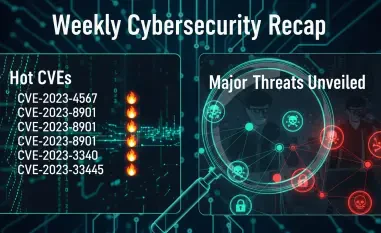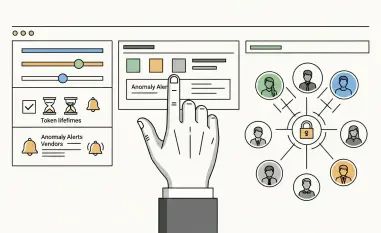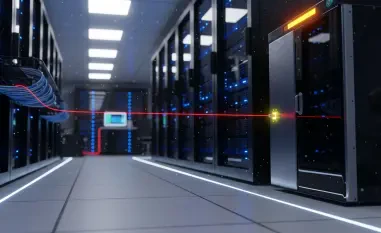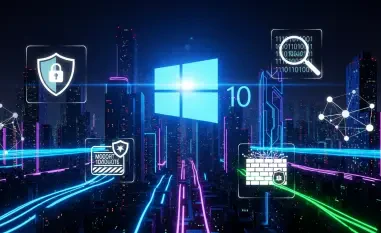Setting the Stage for Cybersecurity Transformation
In an era where cyber threats evolve at an unprecedented pace, organizations face a staggering reality: millions of alerts flood security systems daily, yet up to 40% of these go uninvestigated due to resource constraints, exposing businesses to significant risks. This alarming gap in coverage, which can lead to data breaches and financial losses, highlights the urgent need for innovative solutions. The emergence of AI-driven Security Operations Centers (AI-SOCs) offers a potential lifeline, promising to automate the grunt work of threat detection and response. This review delves into how AI is reshaping the cybersecurity landscape, examining its capabilities, real-world impact, and the challenges it must overcome to redefine traditional models like managed security service providers (MSSPs) and managed detection and response (MDR) services.
Understanding the AI-SOC Paradigm
AI-driven Security Operations Centers represent a seismic shift in how cybersecurity tasks are managed, moving away from labor-intensive, human-centric approaches toward automated, technology-led solutions. These platforms leverage advanced algorithms to handle critical functions such as alert triage, incident correlation, and response initiation, addressing long-standing issues like alert overload and staffing shortages. Unlike the traditional MSSP and MDR models, which rely heavily on human analysts, AI-SOCs operate continuously, processing vast data volumes with precision and speed.
The significance of this transition cannot be overstated in a threat landscape where attacks are increasingly sophisticated and frequent. AI-SOCs provide a scalable framework that reduces the burden on understaffed security teams, enabling focus on strategic priorities rather than routine monitoring. This evolution reflects broader industry trends toward automation, positioning AI as a cornerstone of modern cybersecurity strategies.
Core Components of AI-SOC Platforms
Automation of Detection and Triage
At the heart of AI-SOC platforms lies their ability to automate the detection and triage of security alerts, a task that traditionally overwhelms human analysts. Using technologies like large language models and correlation engines, these systems can process thousands of alerts simultaneously, filtering out noise and prioritizing high-fidelity incidents. This capability drastically cuts down the time spent on false positives, allowing teams to focus on genuine threats.
The performance of these automated systems is a game-changer for operational efficiency. By delivering actionable insights with minimal human intervention, AI-SOCs ensure that no alert slips through the cracks, addressing a critical pain point in traditional setups. The significance of this feature extends beyond mere speed, as it fundamentally enhances the reliability of threat identification across diverse environments.
Incident Enrichment and Response Execution
Beyond detection, AI-SOC platforms excel in incident enrichment and response execution, providing detailed evidence trails that contextualize threats for faster decision-making. These systems aggregate data from multiple sources to paint a comprehensive picture of an incident, reducing the need for manual investigation. This automation of traditionally time-consuming tasks marks a significant departure from the slower, error-prone processes of the past.
In real-world scenarios, the impact of this functionality is evident in quicker containment of threats, as AI can initiate predefined response protocols without waiting for human approval. The technical prowess of these platforms lies in their ability to integrate with existing security tools, ensuring seamless execution. Such advancements highlight how AI is not just augmenting but transforming the operational fabric of security operations.
Recent Advancements in AI-Driven Security
The field of AI-driven security has seen remarkable progress in recent years, with innovations in algorithm maturity enhancing the accuracy of threat detection. Modern AI-SOC platforms now boast improved integration capabilities, allowing them to work cohesively with endpoint detection and response (EDR) and security information and event management (SIEM) systems. These developments signal a maturing technology ready to tackle complex cybersecurity challenges.
Emerging trends also point to a broader industry shift toward automation and internal control, driven by budget constraints and the urgent need for faster threat mitigation. Many organizations are reevaluating their reliance on external providers, opting instead for solutions that offer transparency and direct oversight. This behavioral change underscores the growing trust in AI to handle routine tasks while human expertise is reserved for nuanced escalations.
A notable advancement is the customization of AI models to specific organizational needs, ensuring relevance across varied threat landscapes. As these platforms evolve, their ability to adapt to unique environments becomes a key differentiator, pushing the boundaries of what automated security can achieve. This trajectory suggests a future where AI-SOCs are not just tools but integral components of cybersecurity frameworks.
Real-World Applications of AI-SOCs
Across industries, AI-SOC platforms are finding practical deployment, particularly among small to medium-sized businesses (SMBs) and larger enterprises leveraging tools like EDR and SIEM. For SMBs with limited security staff, these platforms act as virtual Tier-1 layers, handling initial alert triage and freeing up resources for strategic tasks. This affordability—often starting at a fraction of MSSP costs—makes enterprise-grade security accessible to smaller players.
In enterprises, AI-SOCs demonstrate their value in managing complex environments, such as cloud workload alert management, where traditional models often fall short. Case studies reveal significant cost savings and efficiency gains, with some organizations reporting up to an 80% reduction in mean time to respond (MTTR). These implementations showcase the technology’s ability to scale across diverse operational needs.
Unique use cases further illustrate the versatility of AI-SOCs, from monitoring hybrid infrastructures to integrating with legacy systems for comprehensive coverage. Such applications highlight the technology’s role in bridging gaps left by traditional outsourcing models, offering tailored solutions that align with specific risk profiles. The tangible benefits seen in these deployments reinforce the growing adoption of AI-driven approaches.
Challenges and Limitations of AI-SOC Adoption
Despite their promise, AI-SOC platforms face notable hurdles in fully replicating human expertise, particularly in areas like threat intelligence aggregation and forensic analysis. While adept at processing structured data, these systems struggle with the nuanced, contextual understanding that seasoned analysts bring to complex investigations. This limitation poses a challenge in scenarios requiring deep, interpretive insights.
Regulatory and compliance reporting presents another barrier, as AI cannot yet fully address the intricate documentation and auditing needs of certain industries. Market adoption is further slowed by skepticism about over-reliance on automation and concerns over integration with existing workflows. These issues highlight the technology’s current boundaries in replacing all aspects of traditional security services.
Efforts to mitigate these challenges are underway, with hybrid models combining AI automation and human oversight gaining traction. Such approaches aim to balance the scale of AI with the depth of human judgment, ensuring comprehensive coverage. Addressing these limitations remains critical to broadening the acceptance and effectiveness of AI-SOCs in diverse organizational contexts.
Future Outlook for AI-Driven Security Operations
Looking ahead, the trajectory of AI-SOC platforms appears poised for deeper integration with existing security ecosystems, enhancing interoperability across tools and environments. Anticipated developments include breakthroughs in automation capabilities, potentially extending AI’s reach into more complex response scenarios. This evolution could further reduce dependency on manual intervention, reshaping operational norms.
The long-term impact on cybersecurity practices may involve a democratization of advanced security measures, enabling mid-sized organizations to access protections once reserved for large enterprises. This shift carries societal implications, potentially leveling the playing field against cyber threats for a broader range of businesses. The focus on accessibility aligns with industry goals of reducing risk exposure universally.
Exploration of adaptive learning models also holds promise, as AI-SOCs could evolve to predict and preempt emerging threats based on historical patterns. Such advancements would position AI as a proactive rather than reactive force in security operations. The ongoing refinement of these technologies suggests a future where automation and human expertise coexist in a finely tuned balance.
Reflecting on the Journey of AI-Driven Security
Reflecting on the exploration of AI-driven Security Operations, it becomes evident that this technology has carved a transformative path in cybersecurity, automating routine tasks and empowering teams with unprecedented efficiency. The detailed analysis of AI-SOC platforms revealed their strengths in detection, triage, and response, alongside real-world successes that underscored their cost-effectiveness and scalability. Challenges such as limited human-like insight and regulatory gaps were acknowledged as areas needing refinement.
Moving forward, organizations should consider phased adoption strategies, starting with pilot deployments to validate AI-SOC performance in their unique environments. Exploring hybrid models that blend automation with human expertise emerges as a practical solution to address current limitations. Additionally, fostering partnerships with vendors focused on algorithm maturity and integration depth proves essential to maximizing the technology’s potential, ensuring a robust defense against an ever-evolving threat landscape.













